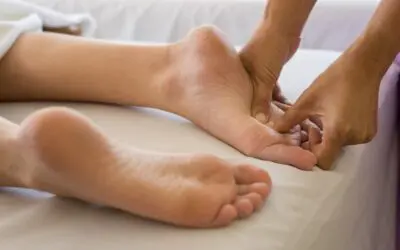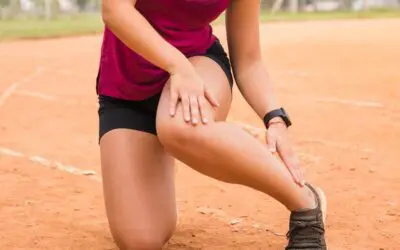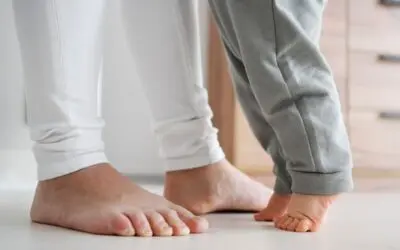Ever look down at your feet and think, “Well, that definitely wasn’t there before”?
Bunions—those pesky, bony bumps that show up at the base of your big toe. They have a way of sneaking up on you. They’re not just an eyesore—they can also cause serious discomfort and send you on a quest for effective bunion pain treatment.
Our patients often ask one burning question: Are bunions an unwelcome family heirloom, or is something else to blame? Let’s jump into the debate of genetics versus lifestyle and figure out what it takes to keep those bumps at bay.
What’s a Bunion, Anyway?
Maybe you’re used to seeing bunions but don’t understand why your toe looks like that. Bunions form when the big toe drifts sideways, creating a bump at the joint. The joint sticks out awkwardly, and that misalignment can create discomfort when walking or wearing shoes.
With inevitable, consistent pressure on the joint, bunions typically worsen over time. Think of your big toe as a stubborn roommate encroaching on your personal space. The good news? Bunions can often be managed or prevented with the proper care.
Do Bunions Run in the Family?
Some people argue that bunions are genetic because your foot structure, including features such as flatness, arch height, and joint flexibility, can be inherited. Plus, weak connective tissue or a tendency for poor body mechanics may come from mom or dad.
So, yes, if your relatives have bunions, you might be at higher risk because of the foot structure genes they’ve passed down—but it’s not a done deal.
Others suggest that lifestyle plays a bigger role in bunion development. Don’t be fooled, though. Many families share lifestyle habits, like shoe choices and activity levels, which could be the cause. So, while those aren’t factors written in your genetic code, they’re still risks passed on by your family.
It’s not all up to destiny, folks—just because Aunt Edna has bunions doesn’t mean you’re doomed to join the club.
Lifestyle Choices
Did Grandma hand down more than her cookie recipe, or are your favorite stilettos the real culprit? Shoes are the biggest offender when it comes to bunions. High heels, pointy-toed shoes, and tight footwear force your toes into unnatural positions for hours.
Your walking and posture habits play an essential role in your toe health. How you distribute weight on your feet as you stand and move affects your toe alignment. High-impact sports or standing all day can also stress the feet, increasing the risk of bunions.
So, ask yourself, are your lifestyle choices helping or hurting your feet? If it’s the latter, simply search for “foot doctor near me” to start down the road to rested feet.
How to Outsmart Your Bunions
First and foremost, choose good shoes. A basic rule of thumb? A wide-toe box in a shoe makes for happy toes. Supportive soles also help distribute your weight evenly. High heels are a fun splurge every once in a while, but keep them stowed away for special occasions.
Do foot exercises regularly to strengthen and stretch your feet from heel to toe. Scrunching a towel with your toes, doing calf raises, and spreading your toes apart repeatedly can improve foot mechanics. Yoga and other balance work can also enhance overall foot strength.
Maintaining a healthy weight puts less pressure on your feet, lowering your risk of bunions. Give your feet the all-inclusive royal treatment they deserve—they’ll pay you back big time.
When to Call in the Foot Pros
Not doing anything about your bunions is the worst path forward. Ignoring a bunion won’t make it go away—that’s like hoping a speeding ticket will pay itself. Visit a clinic if you experience persistent pain or swelling, trouble walking or finding comfortable shoes, or if the bunion is growing faster than your patience.
A doctor will inform you of several treatment options. Non-surgical options include orthotics, physical therapy, or splints. These can help in the early stages of bunions, but they might not work as long-term solutions.
It may come time to fix the problem for good. If the pain is severe, toe corrective surgery could be available, but it’s not a quick-fix solution. Getting back onto fully recovered feet can take three to six months and a lot of rest.
The Future of Your Feet
While bunions may have a genetic link, your lifestyle choices hold the steering wheel when it comes to preventing and managing them. You can’t do much about the genes your parents gave you, but you can make intentional lifestyle changes.
From choosing shoes that treat your toes kindly to incorporating strengthening exercises, small changes today can save you from big problems tomorrow and reward you with pain-free feet that move comfortably.
But if bunion pain has already made itself at home, foot and ankle clinics of Utah are available to help you step into a brighter, healthier future—one foot at a time.



